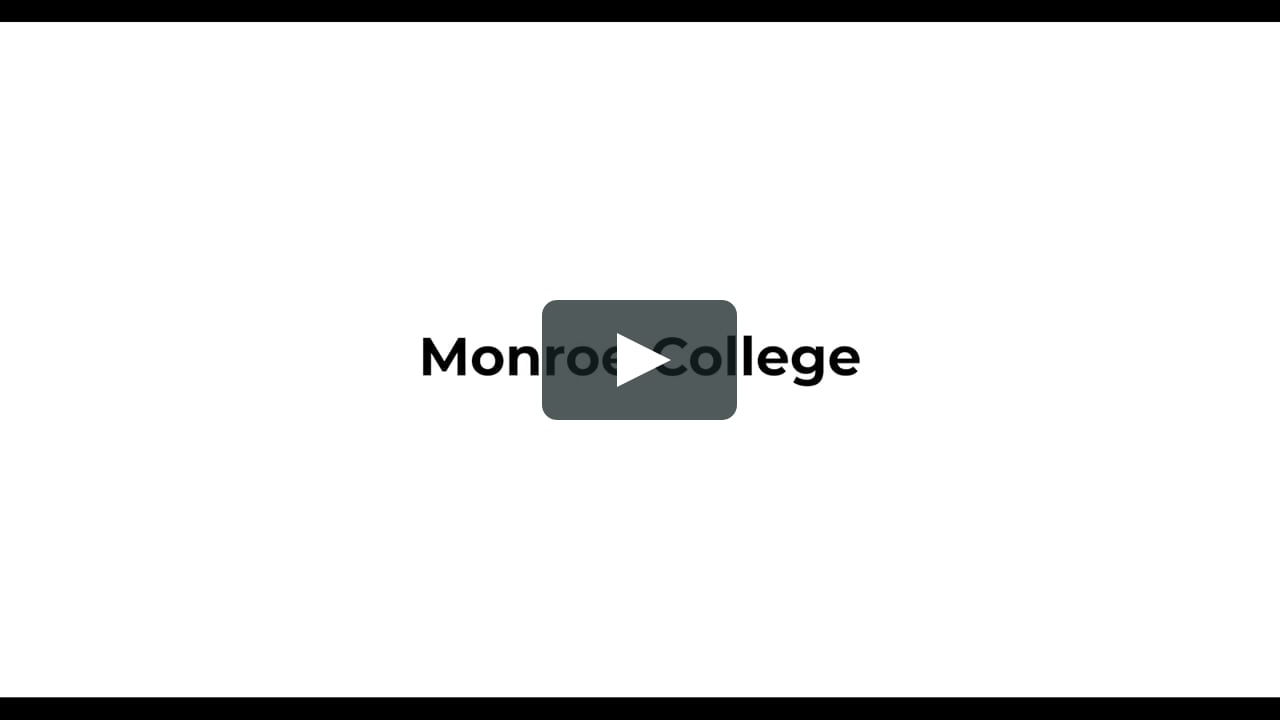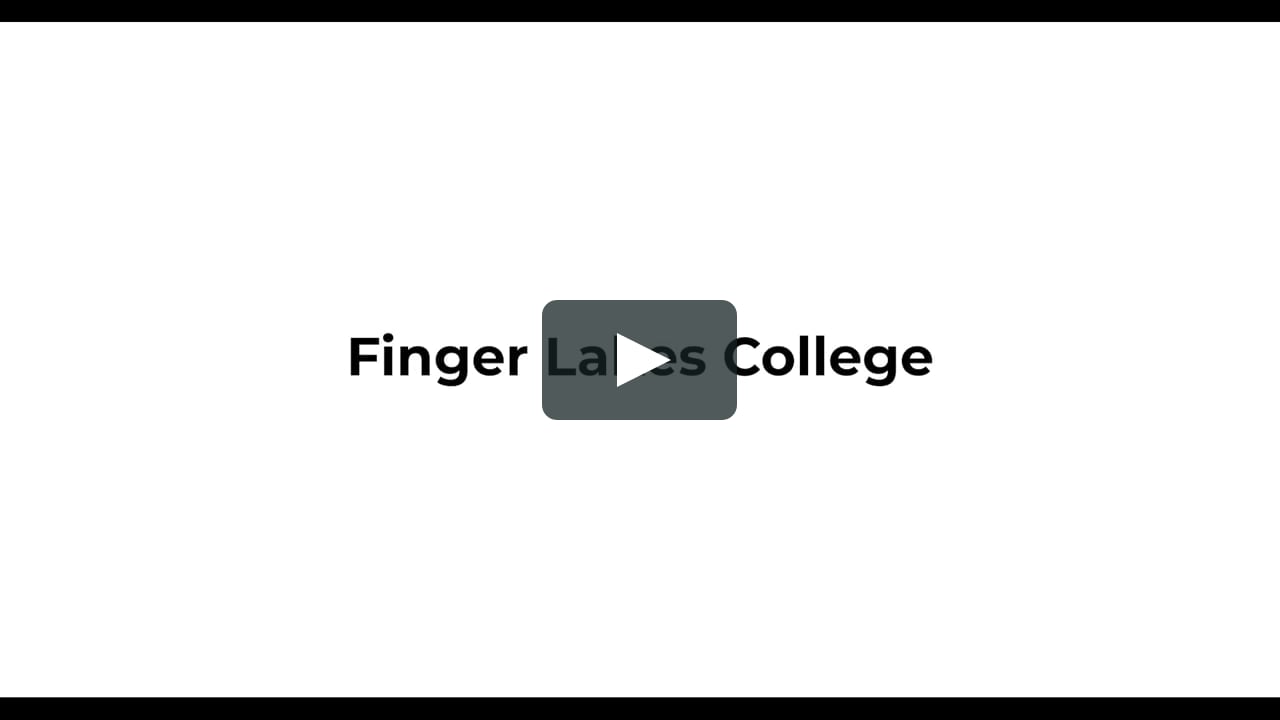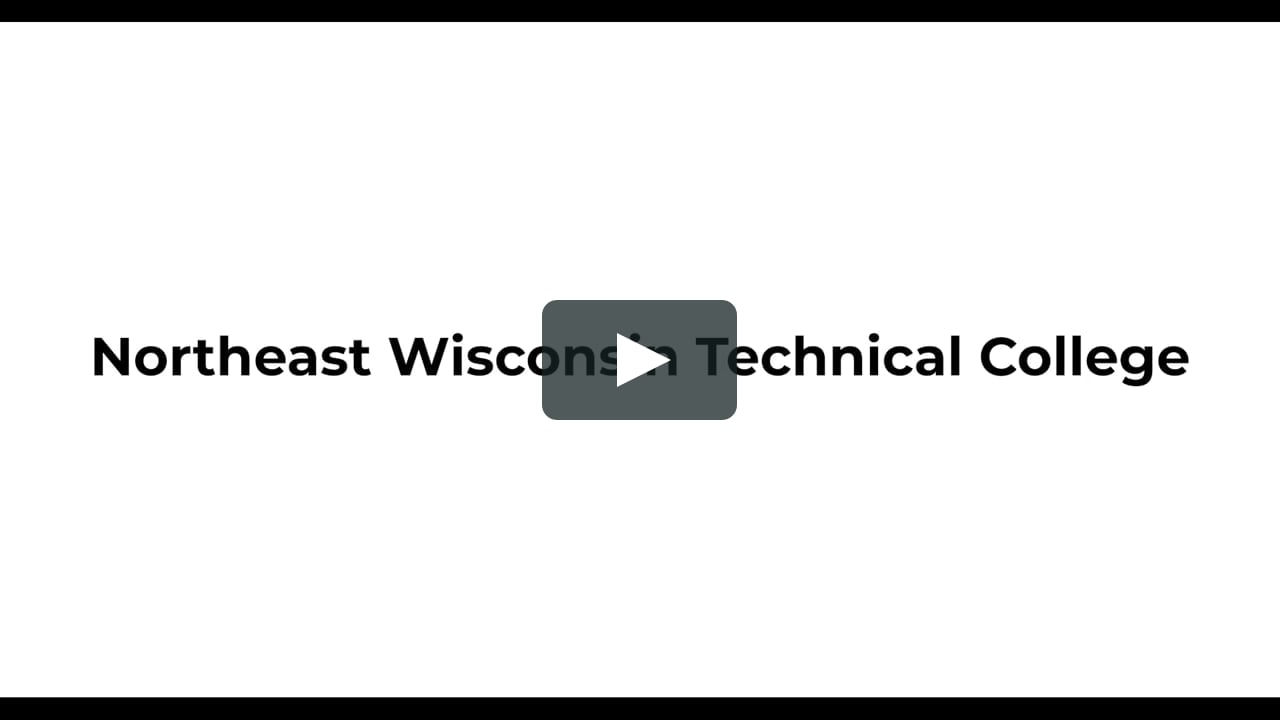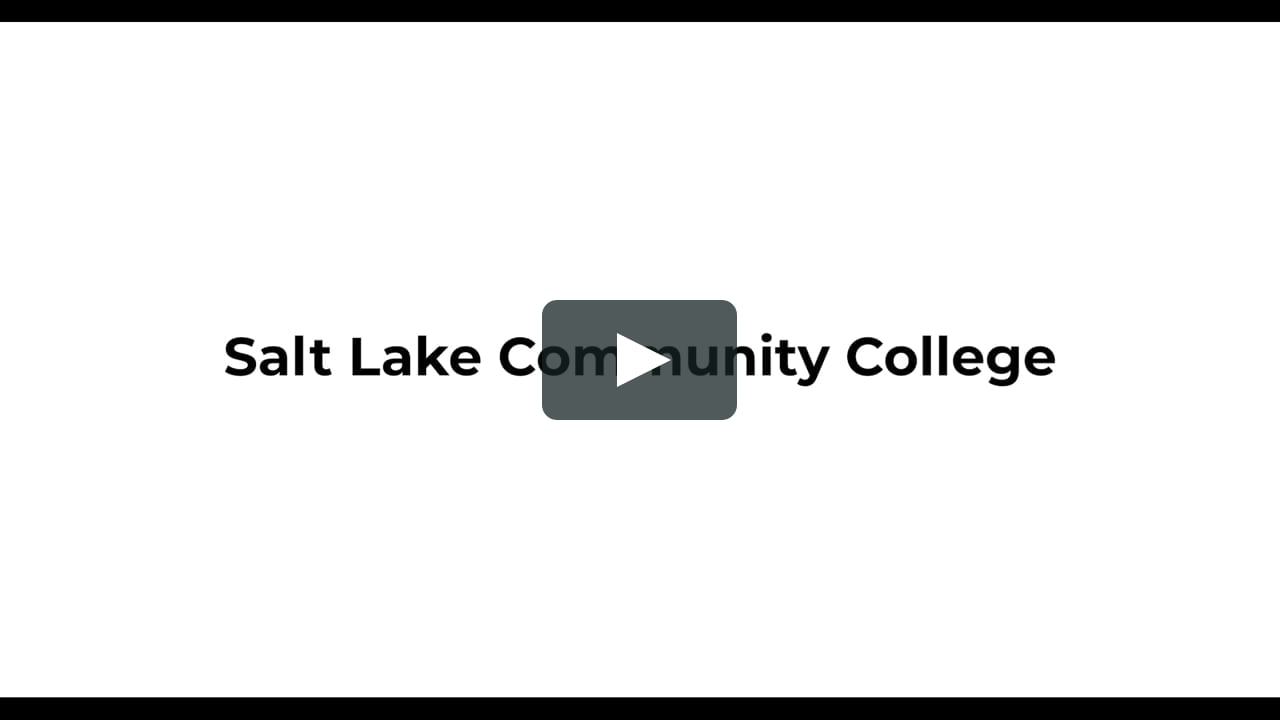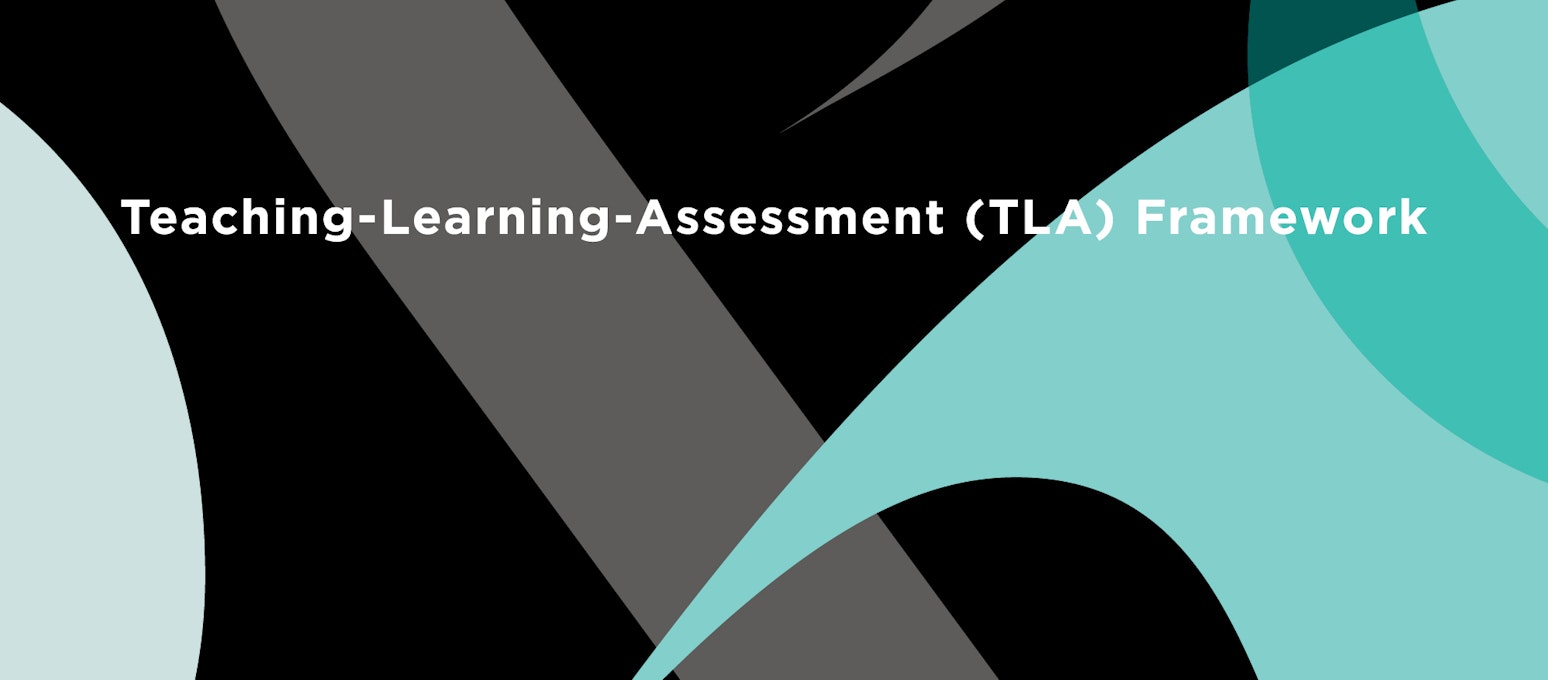

None
Phase 2: Formalize
In this next phase of the TLA Framework, campuses utilize components of the Conceptualize phase to inform the next steps for planning. Using guiding questions, campus examples, and team recommendations, campuses work to develop a preliminary plan of action for enhancing their high-impact, applied learning practices for students.

Planning is essential to the success of the TLA Framework process, as it connects the conceptualization and implementation phases. During the Conceptualize phase, campuses should have examined existing practices, defined equity and equity-mindedness, and identified which pathway(s) would benefit most from this process. In consideration of the resources and lessons learned from the Conceptualize phase, campuses now consider how to integrate and enhance high-impact practices and applied learning experiences, and work to develop an aspirational action plan.
Guiding Questions
Consider these guiding questions as you move through the Formalize phase.
- Consider the context of your institution; what do institutional data suggest about a rationale behind your chosen pathway(s)?
- In what ways is an institution-wide commitment to equity-mindedness demonstrated on your campus?
- How does institutional leadership support and communicate this commitment to equity-mindedness?
- Is there institution-wide clarity in the definition of equity? Of equity-mindedness?
- What areas of the definitions of equity and equity-mindedness lack clarity and consensus?
- Do these institutional definitions of equity and equity-mindedness always translate into practice? If so, in what ways?
- Describe your overall project goals in explicit detail:
- What is the process for attaining these project goals?
- Who will be directly and indirectly engaged in project efforts?
- Why do these project efforts matter to students and to the institution as a whole? What are the possible broader impacts of this process?
- What are some of the main challenges in accomplishing identified goals? How can these barriers be overcome or minimized?
- What are some identifiable opportunities for support? Where is this support sourced, and who is involved? How can your project team leverage these supports to advance project goals?
- How can your campus team efficiently and effectively engage key stakeholders? What communication strategies should be employed to build project awareness and institutional capacity?
- How will you know when progress is being made? What does measuring success look like for your intended project goals and outcomes?
- Which of the following high-impact practices (HIPs) are currently embedded in the selected pathway(s) at your institution?
- First-Year Seminars and Experiences
- Common Intellectual Experiences
- Learning Communities
- Writing-Intensive Courses
- Collaborative Assignments and Projects
- Undergraduate Research
- Diversity/Global Learning
- ePortfolios
- Service Learning, Community-Based Learning
- Internships
- Capstone Courses and Projects
- Which faculty are implementing high-quality HIPs? How is high-quality defined?
- How do your defined project goals promote the integration of HIPs into pathway courses, programs, meta-majors, etc.?
- Which students are exposed to HIPs? What do disaggregated data reveal about inequitable access to HIPs for some student populations?

Developing an Action Plan
Developing a preliminary action plan is essential to achieving your defined project goals. Campus teams should aim to make the action plan detailed, comprehensive, and reflective of the information gained from the conceptualization process. The following components are recommended for inclusion in the action plan:
- Project background & context
- Project description & goals
- Challenges to accomplishment
- Project support opportunities
- Stakeholder engagement plan
- Communication strategy
- Timeline for project work
- Evidence of success
Action Plan Components
Providing background for your project is essential to a successful action plan; it is useful to place your project within the context of your institution—this includes understanding the institutional environment for addressing equity and equity-mindedness. This step is key to understanding the rationale behind your chosen pathway(s) and positioning your project and equity goals within the framework of your institution. Include the following in the background section of your action plan:
- Describe your institution and the demographics of student populations and enrollment.
- Describe the rationale for selecting the pathway(s) chosen in the Conceptualize phase.
- Include data that are relevant to the chosen pathway(s); course descriptions, academic maps, success rates, enrollment levels, level of preparedness, etc.
In this section of the action plan, campuses should focus on the core elements of “what,” “who,” “how,” and “why.” This section should help teams to define the project and its goals, understand the rationale and outcomes, and identify important stakeholders. The following should be included in this section of the action plan:
- Content Goals: the “What” of your project
Describe your project goals in detail; use a bulleted or numbered list to lay out and clarify the various project goals and objectives for your pathway(s). - Process Goals: the “How” and “Who” of your project
Describe the process in which your team will engage in these efforts. For each process goal outlined, identify specifically who will be doing the work. This of course may change, but it adds a layer of accountability and ensures stakeholders are engaged throughout. - Outcome Goals: the “Why” of your project
Describe why your project efforts matter, both for student success and for the institution. Consider the larger impact that your project may have at your institution. Why is engaging in this pathway work so crucial at this time?
- Content Goals: the “What” of your project
By identifying potential barriers early on, campus teams can help reduce the effect that these challenges may have on project outcomes; when addressed in the action plan, these issues can be mitigated before the implementation process begins. Within their action plans, the pilot campuses identified several potential obstacles to accomplishment. Consider how similar and other challenges may arise in your own project, and how your team might overcome them:
- Scaling across departments and institutions
- Leadership/faculty buy-in
- Resistance to achieving equity and building capacity to be equity-minded practitioners
- Institutional support
- Student willingness to engage in project efforts
- Time constraints
- Initiative fatigue
- Lack of compensation
- Low faculty turnout for professional development events
- Fear of change and/or failure
- Technological constraints
Establishing where your team can find support on campus is key to achieving project goals; teams can return to these supports throughout the duration of the project and can also identify where support gaps exist. Some of the project support opportunities that pilot campus teams identified include:
- Partnerships with other departments on campus
- Monetary compensation to support faculty development
- Leadership support on campus (presidents, vice presidents, provosts, deans, etc.)
- Online technology support teams
- Support from groups like committees, advisory boards, review boards, research offices, assessment and curriculum offices, etc.
- Community and local high school partnerships
- Well-developed assessment structures already in place
- Funder supports
As the pilot campuses addressed project content, process, and outcome goals, they simultaneously established a plan for stakeholder engagement and cross-campus collaboration to build awareness of and institutional capacity to accomplish project goals. For many campuses, stakeholder engagement may involve collaborating with institutional effectiveness, institutional research, and deans’ offices in data collection and implementation, while others may engage stakeholders through a series of presentations and professional development days. Consider the following recommendations for promoting collaboration and engaging stakeholders:
- Pilot testing to assess levels of engagement activities prior to the involvement of institutional governance leadership and academic senate.
- Formal presentations to institutional cabinet members.
- Increasing awareness of initiatives with area high schools and other colleges and universities.
- Working with professionals in the community who are committed to teaching courses and/or working with campus teams in some capacity.
- Focus on re-identifying course level data on Blackboard for increased attention toward strengthening faculty awareness of student engagement strategies to ensure students are learning.
- Listen, encourage input, and share how stakeholder input is taken into consideration and/or implemented.
- Acknowledge and honor stakeholders' work and their dedication to student success.
- Consistently touch base/check-in to see how they are doing and how they can best be supported (sustained engagement).
- Regularly share project updates.
- Continually strive to be transparent.
Developing a plan for communication efforts surrounding your project can help your team reach a wider campus audience and encourage project support from other institutional departments, offices, and governing bodies. Consider different types of marketing and communication strategies that could further advance your project efforts on campus. What is the most effective way to spread awareness of your project and foster further support from campus stakeholders and influencers? Below are examples of communication strategies:
- Partner with campus governance/committees to share updates via e-news or newsletters.
- Make group presentations to stakeholders (faculty senate, student learning outcome committee, college council, deans, presidents, institutional effectiveness office).
- Create a tagline for your project that is catchy and easy to remember.
- Create an infographic to be used in communications and presentations (consider hiring a graphic design student to create this!).
- Host a convocation around your project, led by faculty engaged in the work.
- Create faculty awards/recognition for faculty implementing project efforts in the classroom.
- Create clear, consistent messaging surrounding your project when communicating with stakeholders.
- Share project reports and data findings with stakeholders throughout the project.
- Present at several professional development events.
- Communicate with students about assessment outcomes, and how information will be used.
Though different for every campus, outlining a timeline for your project is an important step when planning for implementation. Think about your project outcome goals, and be realistic about how long preparation, planning, and implementation could take. Consider previously discussed factors such as barriers to accomplishment, opportunities for support, engaging stakeholders, data and assessment analysis, etc.
The final step in creating the preliminary action plan is to consider what success will look like for your project. To be successful in implementation, campuses should envision what evidence of forward progress looks like in relation to the five components of the Ensure Students Are Learningpillar. What informs this evidence, and how can you measure it? Consider these examples of evidence and how they may or may not apply to your project:
Scaled, high-quality, program-relevant applied learning experiences:
- The assignments used to address critical thinking and communication within specific courses would change/undergo revision, suggesting refinements in the understanding of what constitutes critical thinking.
- Concentrations are formalized and more intentional.
- Student surveys indicate that attending campus events (in person or online) increases their sense of belonging at the institution and has a positive impact on their educational experience.
Intentional and sustained student engagement:
- Greater, more meaningful contact between faculty and students.
- Students demonstrate thoughtful decision-making in creating, reviewing, and revising or maintaining their pathway choice.
- Testimonials/reflection papers to understand how/whether the course helps students.
Evidence-based, high-impact teaching practices across modalities:
- Student learning outcome (SLO) data that show the extent to which students in courses that employ high-impact practices (HIPs) can demonstrate critical thinking.
- Evidence of HIPs faculty instructional adjustment in response to learning outcome data.
- Data that show evidence of student learning through HIPs in relation to intended SLO and that provide information for a model to drive continuous improvement.
- Greater faculty awareness and adoption of HIPs across pathways and modalities.
Institution-wide commitment to equity-minded, asset-based teaching improvement:
- Evidence exists that suggests equity criteria are met for student opportunities with integrative learning and experiential learning.
- Institution-wide clarity in equity-focused goals, language, and definitions.
- Defined processes for examining equity-mindedness within campus practices, policies, and procedures.
- Faculty demonstrate effective use of tools for establishing/sustaining equity.
- Lower and more equitable in course sections.
- Data evaluating access to and representation of diverse student populations in courses that employ HIPs.
- Development, implementation, and assessment of professional development workshops and modules.
Quality assessment of program learning outcomes that lead to credentials, further education, and/or gainful employment:
- Consistent inter-rater reliability and interpretation of VALUE rubrics.
- Baseline for course-based learning outcomes is established, and these measures trend upward in succeeding terms across student identity groups.
- Student artifacts collected at the end of the semester reflect a positive improvement in student learning across identity groups, demonstrated by disaggregated data.
- An increased interest in large-scale adoption of a strategic assessment framework over a substantial timeframe.
- Widespread adoption of VALUE rubric-based assessment across pathways and departments.
Campus Spotlights: Developing an Action Plan
Clearly defining content, process, and outcome goals helps campus teams stay focused and intentional throughout the process of implementation. The Salt Lake Community College team outlined explicit project goals within their chosen pathway, giving clear examples of embedding HIPs, assessing student learning outcomes, plans for professional development, etc.
Content goals: the "What" of your project
Make general education more intentional in the pathways by connecting the signature assignment* to general education designations in order to produce a high-impact learning experience. Ensure that students are learning by:
- Aligning signature assignments with general education student learning outcomes
- Ensuring that ePortfolio is a high-impact practice
- Assessing student learning
Process goals: the "How" and "Who" of your project
How:
- Update and map learning outcomes to the general education designations
- Improve ePortfolio pedagogy by doing the following:
- Provide sample signature assignments and reflection prompts.
- Host assignment design charrettes and post the deliverables on a Canvas shell, so faculty can copy content directly into their Canvas sites.
- Design sample assignments.
- Design reflection prompts at the designation level.
- Create grading rubrics.
- Host professional development trainings that are designed within departments or designations and consider posting on a faculty resource page.
- Develop rubrics to assess the ePortfolio signature assignments and reflections as an indicator of whether the general education learning outcomes are being met.
- Assess the correlation between ePortfolio quality and general education learning outcomes. Start with critical thinking.
- Collect pre- and post-intervention data for 100 artifacts (50 with low-impact ePortfolios and 50 with high-impact ePortfolios)
- Pilot course: FHS 1500: Lifespan Human Development
- Disaggregate assessment data.
Who:
- Institutional research office: disaggregate assessment data
- General education committee: edit general education/SLCC learning outcomes
- Design team: organize learning outcomes mapping
- Faculty
- Mapping and creating rubrics
- Charrettes - 8-10 faculty members from each designation
Outcome goals: the "Why" of your project
- Ensure that all students regardless of race, gender, ethnicity, first-generation status, etc. are achieving the general education learning outcomes.
- Facilitate faculty development and implementation of high-quality ePortfolio signature assignments and reflection prompts.
- Assess ePortfolio signature assignments to ensure that (a) general education learning outcomes are being met, (b) ePortfolio is being experienced by most students as a high-impact practice, and (c) data are available to further improve general education and ePortfolios.
*The term signature assignment refers to an assignment, problem, or project that is tailored to require students to demonstrate their expected learning for assessing and improving student learning (AAC&U).
At Monroe Community College (MCC), the project team engaged a diverse group of campus stakeholders to advance project goals. The graphic below provides an example of how MCC collaborated with faculty/staff across departments and offices to enforce project efforts and build capacity:

Almost every college or university offers some form of every high-impact practice...But at too many institutions, only small numbers of students are involved. The time has come for colleges and universities to make participating in high-impact activities a reality—and a priority—for every student.
High-Impact Practices (HIPs)
High-impact practices are an imperative component of the TLA Frameworkprocess; they promote deep student learning and often increase rates of student retention and student engagement. A key component in the refreshed definition of the Ensure Students Are Learning pillar of the Guided Pathways model, high-impact practices must be integrated into project goals in an equitable and scalable way to guarantee that students are meeting learning objectives. Research suggests that the following high-impact educational practices are increasingly beneficial to student learning:
- First-Year Seminars and Experiences
- Common Intellectual Experiences
- Learning Communities
- Writing-Intensive Courses
- Collaborative Assignments and Projects
- Undergraduate Research
- Diversity/Global Learning
- ePortfolios
- Service Learning, Community-Based Learning
- Internships
- Capstone Courses and Projects

Designing Equity-Centered High-Impact Practices
When designing high-impact practices (HIPs), equity is often excluded or considered an optional design element. It is critical to start with an equity-centered design process for HIPs, particularly to improve outcomes for minoritized and underserved students. This process starts with a clear, institution-wide understanding and definition of the terms “equity” and “equity-mindedness” introduced earlier in this framework. "Designing Equity-Centered High-Impact Practices"by Ashley Finley, Tia McNair, and Alma Clayton-Pedersen (a chapter within Delivering on the Promise of High-Impact Practices), provides a comprehensive overview of the quality dimensions of high-impact practices, recommendations for designing equity-centered HIPs, and how to be an equity-minded practitioner.
As you think about HIPs design, consider the following questions:
- Are HIPs at your institution identity neutral?
- What quality and equity frameworks influence the design of HIPs at your institution?
Beyond the Institute
The twenty campus teams that piloted the project attended the AAC&U Institute on High-Impact Practices and Student Success. This annual institute is designed to advance campus and institution-level efforts to achieve quality, equity, and student engagement through the design, implementation, and assessment of HIPs. Campus teams engage with institute faculty to identify opportunities and develop strategies for implementing teaching practices that improve learning outcomes for all students. Goals of the institute include developing/refining action plans; developing plans to help support faculty in implementing HIPs; integrating equity, diversity, and inclusion into teaching practices; and designing HIPs across curricula to reach all students. The institute also provides the opportunity for campus teams to connect with one another and form important relationships with mentors and institute faculty.
While AAC&U encourages interested campuses to attend an Institute on High-Impact Practices and Student Success, it is not a necessary action for engaging in the TLA Framework process. Rather, campuses should consider the key takeaways from the institutes and how this can help inform and advance pathway project goals and efforts.
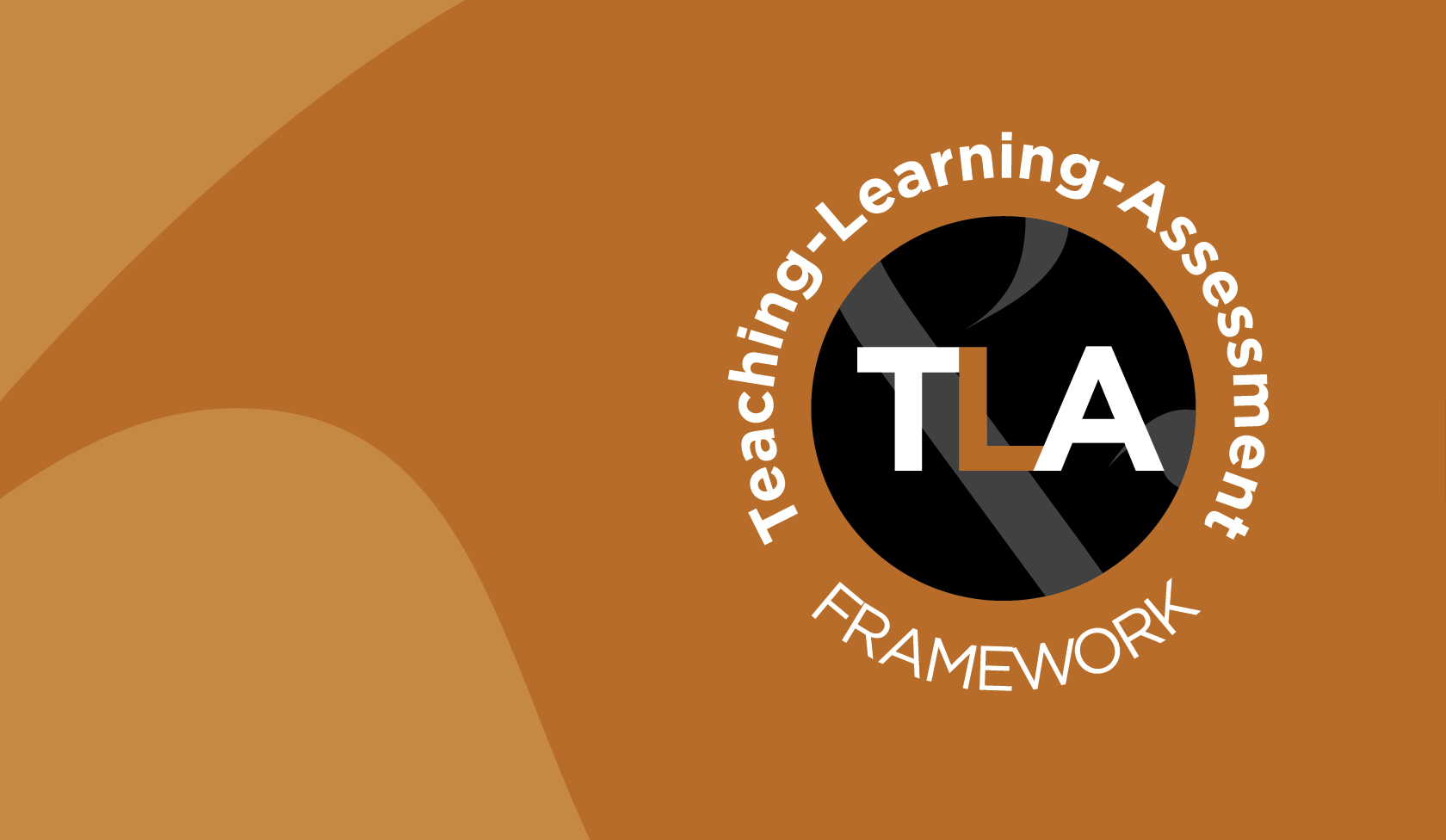
Cross-Campus Collaboration
Among the many activities that occur at the HIPs Institute are cluster meetings and team time. These institute activities are meant to engage campus teams in hearing from other institutions and mentors in smaller groups, address issues within their action plans, and work together to develop and refine their plans with feedback. These institute activities encourage campus teams to collaborate with one another, share ideas, discuss challenges and opportunities, and provide helpful insight to one another. As with any large-scale project, collaboration can be a vital tool for success.
Consider connecting with other campuses that have engaged in the TLA Framework process to form networks of support throughout your project. This can also be applied internally; the broader the collaboration across your own campus, the more scalable and change-inducing your project will be.
Student Demographics & HIPs
When thinking about high-impact teaching practices on your campus, it is essential to consider which students are engaged in and affected by these practices. Consider reflecting on the following questions related to student demographics and HIPs:
- What is the demographic makeup of the students you teach? How are these demographics shifting over time?
- How does your institution center equity-mindedness in high-impact teaching practices?
- Who participates in HIPs and how? Consider specifically racially minoritized and first-generation students.
- How can departments or programs collaborate with student services to promote engagement with HIPs and student success for all students?
We’ve been able to do a lot of work that affects teaching and learning on our campus. It is because of our association with [AAC&U] that we have completely redesigned our First-Year Experience.
Creating the Space: Conversations on Cocurricular Experiences
Creating a conversational space about cocurricular experiences allows project teams, faculty, and leaders to intentionally think about the capacity for HIPs on their campuses, and how to scale these practices across more pathways. It also allows students to engage in the dialogue, voice concerns, and provide insight into the student experience.

Questions for Cocurricular Conversations
- What are some of the main concerns that students have regarding cocurricular experiences?
- How has your institution strengthened capacity for implementing HIPs on campus?
- What measures have been taken to ensure students can engage in meaningful cocurricular experiences, even during a time like COVID-19? How has your institution adapted to this?
- What are some ways that HIPs could be embedded and scaled across more pathways?
- What is the role of faculty and leadership in ensuring students have a space to voice concerns about cocurricular experiences and engagement in high-impact learning practices?
Campus Spotlights: High-Impact Practices (HIPs)
At Houston Community College (HCC), the project team focused on analyzing student and faculty data to identify existing high-impact practices, student success rates, and exposure to HIPs in certain pathways. This enabled the team to plan for implementation of their chosen HIPs, plan for VALUE scoring, and plan for professional development opportunities surrounding HIPs. Below is the HCC campus team’s process of using data in identifying, planning for, and improving HIPs:
Information Gathering Methods
- Surveyed faculty to get inventory of current HIPs used in English 1302 and Government 2306 courses and inventory of current practices used to assess student learning outcomes
- Collected, reviewed, and discussed disaggregated student data related to course success rates
Findings: Existing High-Impact Practices Identified
- Common intellectual experiences
- Writing Intensive courses
- Collaborative assignments and projects
- Undergraduate research
- Diversity/Global learning
Findings: Course Success Rates (2018)
- Faculty collected, reviewed, and discussed course success rates for students, disaggregated by three race categories (African American, Hispanic, White).
- The data showed significant gaps in success rates, particularly in English 1302. Data from 2018 showed that African American students’ success rates in English 1302 were 13 percentage points lower than those of their White peers, and Hispanic students’ success rates were 8 percentage points lower than the White students in the course.
- In Government 2306, student success rates for African American students were 3 percentage points lower than those of Hispanic students, and 7 percentage points lower than those of White students in the course.
In conjunction with the faculty surveys on existing high-impact practices and assessment methods, the HCC campus team used their disaggregated student data to expand access and improve specific high-impact practices in their courses and pathways. The information gathering techniques also helped to inform what areas of professional development needed improvement and attention.
Implementation
- English 1302
- Government 2306
Choosing a VALUE Rubric
- Written Communication VALUE Rubric was chosen in both courses to examine progression from the beginning to the end of the students’ program pathway
- Evaluation on a common rubric in both courses was an opportunity for a more in-depth review and to document student learning outcomes longitudinally.
Level and Intent of Assignments
- Assignments addressed all aspects of the written communication rubric
- Assignments contained components designed to engage students with the material and with each other, personalizing the material
- Government assignments emphasized the "why" for discipline-specific content, engaging students in the course
- Communication to students: Provided with specific information regarding the VALUE rubric to be used for scoring purposes
Professional Development Activities/Topics
- VALUE rubrics for benchmarking
- Pathways and equity
- Expectations for student preparedness
- Reading assignments using multiple perspectives and voices representative of students in the classroom
- Writing expectations: focusing on non-traditional assignments and asset-based projects
With a project focus on the Nursing Associate Degree, Northeast Wisconsin Technical College (NWTC) aligned its identified student learning outcome (SLO) with a service-learning high-impact practice for gainful employment. Using data points on its nursing student population, the campus team integrated the SLO into the service-learning requirement in alignment with the institutional strategic plan, and in consideration of equity in the nursing field. Below is the NWTC project team’s strategy for implementing a high-impact practice for student success and gainful employment:
Project Focus
- Nursing Associate Degree
- Service learning
- Written communication
Project Goals
- Comprehensively evaluate employability skills, starting with written communication.
- Service learning will be focused on to assess the correlation of this high-impact practice and successful written communication skills.
- Measurements of student access, participation, and success will be developed to inform future opportunities for participating and benefiting from the high-impact practices that are equitable for all students.
- Every student will be sufficiently competent to be an effective written communicator to be prepared to be an effective and successful employee in their field to meet employer demands.
- Better assessment of employability skills will validate the work that is being done at multiple levels (institutional-, course-, and student-level) and identify opportunities for ongoing improvement.
Service Learning
- Embedded throughout the college with continued growth
- Aligned with college’s 2023 Strategic Direction
- National evidence exists of correlation between service learning and written communication
- Completed in second year of nursing program
- Graduation requirement for Nursing Associate Degree
- Utilize the community capitals model for students to consider equity in nursing

Activity of Focus

The Palo Alto College team focused on the use of ePortfolios to support experiential and integrative learning while demonstrating student learning and development of core competencies through student reflections. Below is how the Palo Alto College team engaged with ePortfolios to promote student learning in their chosen pathway:
Project Goals
- Faculty and students use ePortfolios to demonstrate student learning and to reflect upon progress toward learning outcomes/core competencies.
- Create a repository of experiential learning opportunities. Experiential learning opportunities will cross majors and meta-majors and will be recorded and reflected upon within the ePortfolios. A site for experiential learning opportunities available to faculty and advisors.
- A robust, direct assessment structure that includes the student voice.
- Students understand and articulate the development of their knowledge and skills.
- ePortfolios serve as an evolving repository of student work that can be used to demonstrate acquisition and development of core competencies.
- Students clarify and understand the evolution of their educational and career goals (pathways).
Implementation of e-Portfolios
- All students in the required Learning Frameworks class, EDUC 1300, now open an ePortfolio.
- Initial reflections for this class in consideration of their individual success plan and personal mission.
- Student reflections now include conversations with advisors about the development of their goals, revision, and reconsideration of their pathway.
- The use of reflection within the ePortfolio has been added to key assignment design workshops, designed for general education outcomes assessment.
- In the 2019-2020 academic year, 2,000+ ePortfolios were created. The ePortfolio has been integrated with all Canvas courses and serves as part of the First Year Experience.
Examining the Student Voice on e-Portfolio Use
Palo Alto College emphasized the importance of the student voice in their use of ePortfolios as a high-impact educational practice. Reflective mission statements and success plans helped keep students on track and successful in learning outcomes. Below are examples of student voices on the use and impact of ePortfolios:
- “I have cerebral palsy. I never had a voice. Now I do. I am a student at Palo Alto College. We use ePortfolios (Portfolium) to help us drive our own educational journey. My dream was to be a writer. I wrote a book last semester. I am now a published writer.”
- “I am so glad that two of my professors were adamant about not only creating a professional site that would help encourage employers to hire me, but also publishing my projects and essays. And by doing that it has also helped build my confidence when it comes to my own pieces of work.”
- "Using Portfolium has made an impact on my educational journey by opening doors for my art, I'm able to expose myself even more through it and make connections with some really talented people. It's taught me organization skills and time management. I love Portfolium!"
- “I gained self confidence in my abilityto set goals.”
For some of the pilot campuses, creating institutional awareness and building capacity for implementing high-impact practices campus-wide was a primary goal. At San Antonio College, this meant taking a preliminary inventory of how HIPs are being used in classrooms across departments, programs, and courses. This also entailed creating a web-based space where faculty and students could learn more about what HIPs entail, how they are used, and why they are essential for positive student learning outcomes. Below are San Antonio College's methods of evaluating and implementing HIP use on campus:
College-Wide HIPs Website
- Designed to help faculty and students explore high-impact practices and integrate them into the learning experience at San Antonio College.
- Includes basic high-impact educational practices with examples and definitions
- Provides a brief overview of the basic HIP approaches along with examples of how they may be incorporated into course designs.
- Includes helpful FAQ section with answers on why HIPs are important, who benefits from HIPs, and where more resources/information can be found.
HIPs Inventory
- A section of the HIPs website allows both faculty and students to share their experiences with HIP use in classroom settings.
- Online, fillable forms allow faculty and student participants to describe where and how HIPs are used and to answer questions related to HIPs on campus.
- Faculty are asked questions such as:
- How long have you used HIPs?
- Are you using a rubric? If so, which one?
- Can you share a student success story that has resulted from this practice?
- What kind of faculty development specific to HIPs would you be interested in?
- Students are asked questions such as:
- Can you tell us how this strategy has helped you learn or understand the course material better?
To improve HIPs implementation and identify existing equity gaps, Middlesex Community College conducted an in-depth analysis of disaggregated HIPs data, focusing on which students were exposed to the HIPs within their Criminal Justice program and how success rates were broken down.
By analyzing the student data, the project team could identify how HIPs affect different student groups, find ways to improve and create equity among student experiences in programmatic HIPs, and understand how to engage faculty in the development and delivery of quality HIPs.
Through this process, the Middlesex Community College team set goals to:
- Identify where HIPs exist on the curricular map
- Develop a gap analysis method
- Apply the gap analysis to the selection of additional HIPs
- Identify strategies aimed at improving the assessment of student learning in HIPs through an equity-minded lens.
High-Impact Practice in Criminal Justice: Criminal Justice Weekend Career Exploration Course


With a project focus on the General Studies (GS) pathway, the Community College of Baltimore County (CCBC) was able to examine and analyze the infusion of HIPs in high-enrollment general education courses. In collecting data across courses where HIPs were being infused, the CCBC team was able to develop and expand a comprehensive data dashboard, which tracks disaggregated student success and retention rates in those courses.
The data dashboard revealed a clear and significant correlation between student retention rates and HIPs-infused course sections. Depending on the course, differences in retention rates as high as 13 percentage points were seen. The figure below demonstrates the retention rate comparisons between HIPs and non-HIPs course sections.

To ensure that equity gaps are not overlooked, the CCBC team also examined and compared the course success rates (earning a grade of A, B, or C) of White and African American students in HIPs and non-HIPs course sections. While there is still a significant difference between White and African American students’ experiences in HIPs-infused course sections, the data revealed a narrowing gap (28 percent to 17 percent) in course success rates when students are engaged with HIPs in the classroom. The table below demonstrates these gaps in course success rates for White and African American students in the Psychology 101 course.

Key Takeaways
Develop an aspirational action plan that includes the following components:
- Institutional background
- Project description and goals (content goals, process goals, outcome goals)
- Barriers to accomplishment
- Project support opportunities
- Plan for stakeholder engagement
- Communication strategies
- Project timeline
- Evidence of success
- Take an inventory of which HIPs are currently implemented at your institution.
- Focus on creating equity-minded, asset-based approaches to designing HIPs.
- Consider the recommended HIPs and the eight quality dimensions in practice.
- HIPs can encourage cross-institutional and inter-institutional collaboration.
- Consider how HIPs affect student demographics and vice versa.
- Create an open dialogue space for students and faculty to talk freely about co-curricular experiences, doubts, issues, successes, etc.
- Disaggregate your student data to understand the relationship among HIPs, student success, and existing equity gaps.
Formalize Resources
Engage with the resources below, selected to help campuses consider areas of focus introduced in the Formalize phase.
 AAC&U HIPs Quality Dimensions
AAC&U HIPs Quality Dimensions
 Online Learning Consortium Research Center for Digital Learning & Leadership
Online Learning Consortium Research Center for Digital Learning & Leadership
 AAC&U Institute on High-Impact Practices & Student Success
AAC&U Institute on High-Impact Practices & Student Success
 High-Impact Educational Practices, George Kuh
High-Impact Educational Practices, George Kuh
 AAC&U LEAP Challenge
AAC&U LEAP Challenge
 AAC&U Folio: Bringing Quality & Equity Together
AAC&U Folio: Bringing Quality & Equity Together
 Anthology: The Essential Role of Co-Curricular Programs
Anthology: The Essential Role of Co-Curricular Programs
 Cultural Wealth Model, Tara Yosso
Cultural Wealth Model, Tara Yosso
 Designing Equity-Centered High-Impact Practices, Finley, McNair, and Clayton-Pedersen
Designing Equity-Centered High-Impact Practices, Finley, McNair, and Clayton-Pedersen
